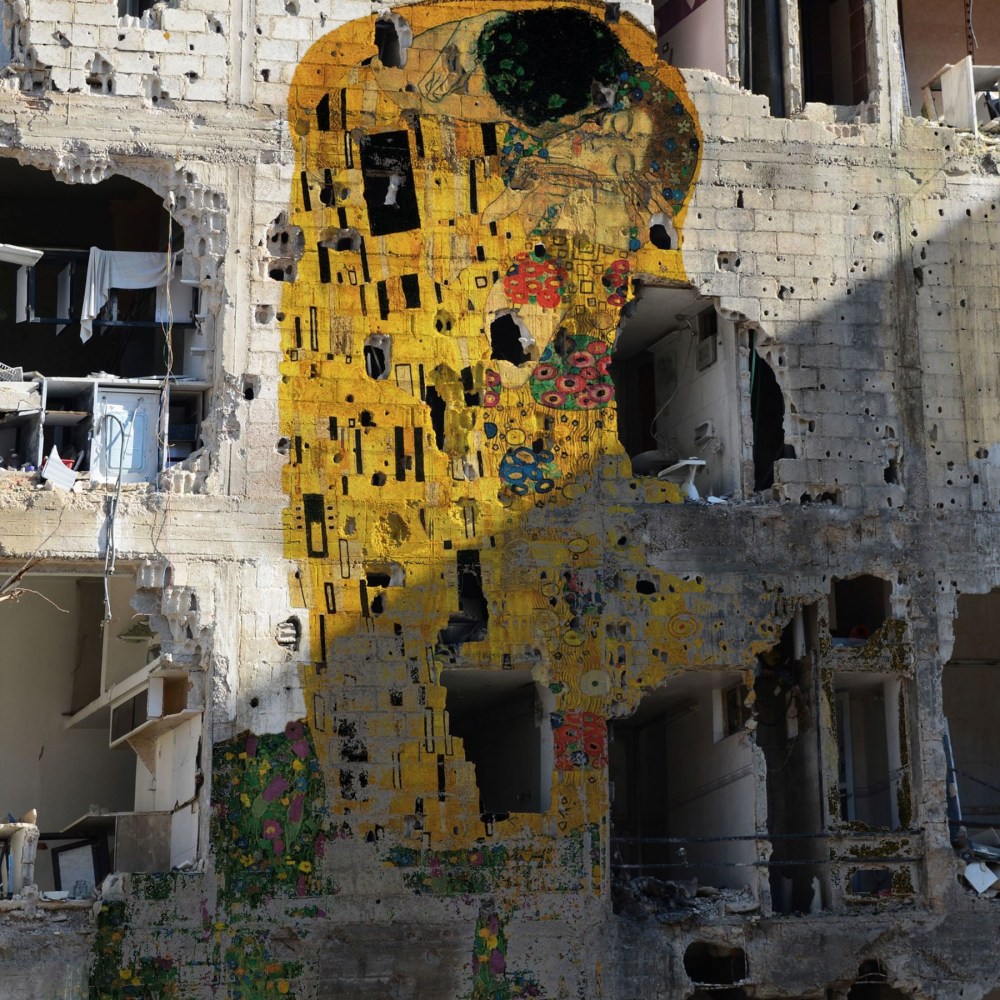
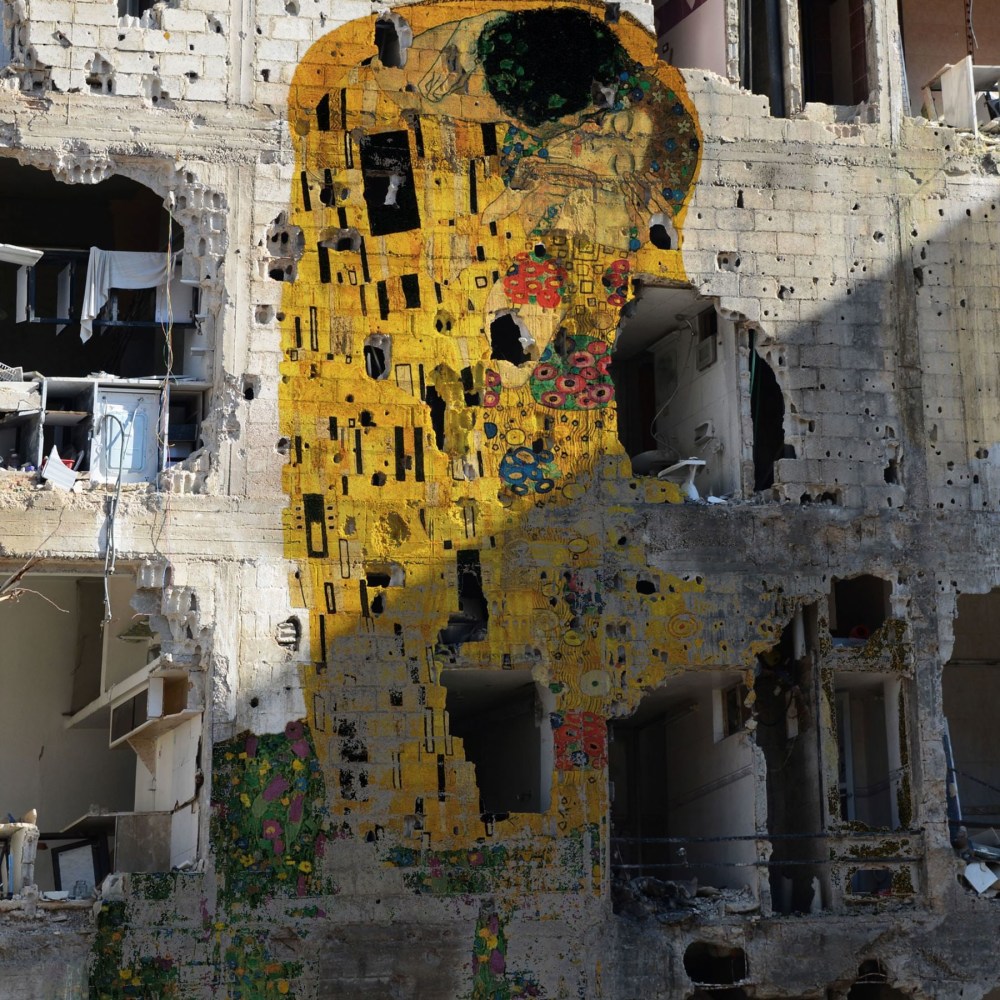
Tammam Azzam, "Gustave Klimt's the Kiss (freedom Graffitti) Syrian Museum Series" Print, 2013
Tammam Azzam left Syria in 2011. A few years later, when he released his photomontage work of Klimt’s The Kiss, depicting the iconic painting transposed on a crumbling Syrian building, the Internet went crazy. The ensuing international press coverage and global attention even led to the inclusion of his work in Banksy’s sensational Dismaland exhibition in the UK. Since then, Azzam has moved to Germany, most recently settling in Berlin. He talks to The Journal about the transition from painting to digital work and back again, and how moving has influenced his work.
People talk a lot about identity these days – particularly in the case of Syrian artists like myself, who have found themselves displaced and living in different countries. My work, like that of so many of my compatriots, has been affected by what is going on at home, but does that automatically make us refugee artists? Does it make us political artists? Who are we?
My family and I have seen a lot of change – we have moved so many times in the last eight years, from Syria to the UAE and now to Germany. I certainly don’t see myself as a refugee, but then again, I never quite ‘belonged’ in Syria either – I grew up in Ta’aara a quiet village in the south and moved to Damascus when I was 18, which brought me in contact with busy city life. However, as an artist, one can be quite isolated, working on one’s own in the studio
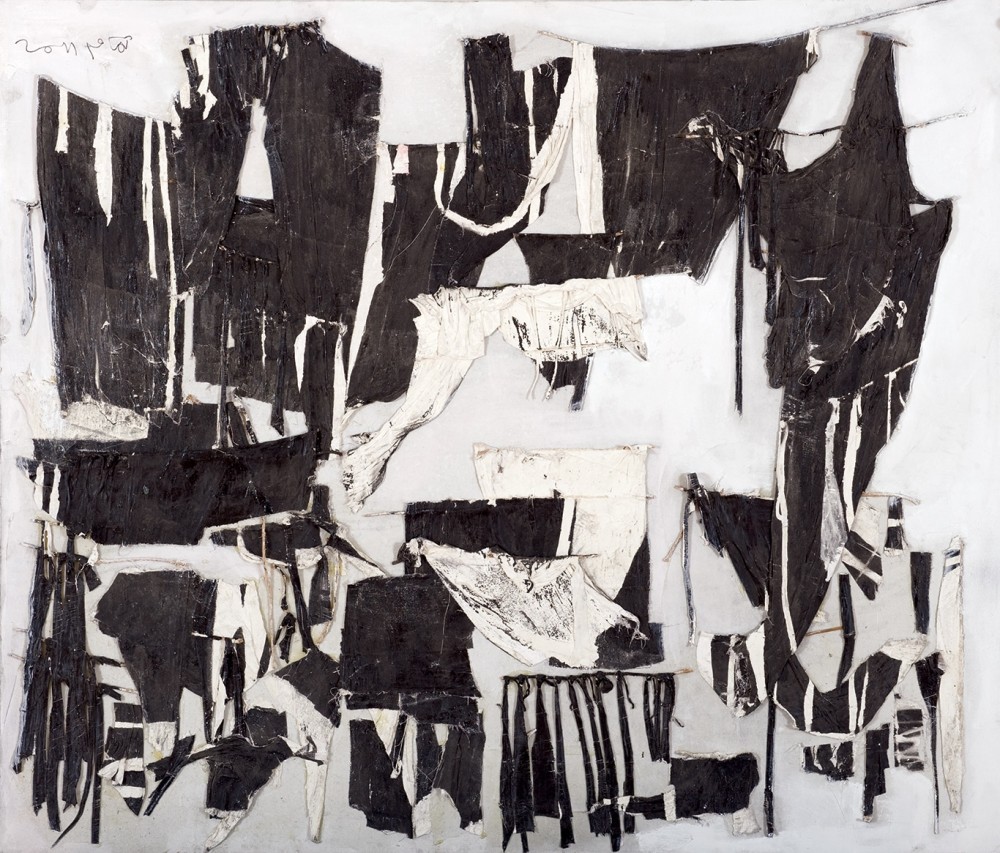
Tammam Azzam, Untitled from Dirty Laundry Series, 2011
Leaving Syria was never the ‘plan’, but seven months into the Revolution, we moved to Dubai. It all happened quite suddenly and Ayyam Gallery provided the support for us to go somewhere safer. As an artist it was tough to leave my studio behind and change my way of working. I had been in the middle of my Dirty Laundry series of mixed media works and suddenly we were plunged into starting our lives anew.
Pausing the Laundry series was also poignant because the very materials that I had used to make it – pieces of clothing and textiles gathered in the streets around my studio in Damascus – became symbolic of a way of life and an urban environment that I no longer had access to: these materials became mere memory.
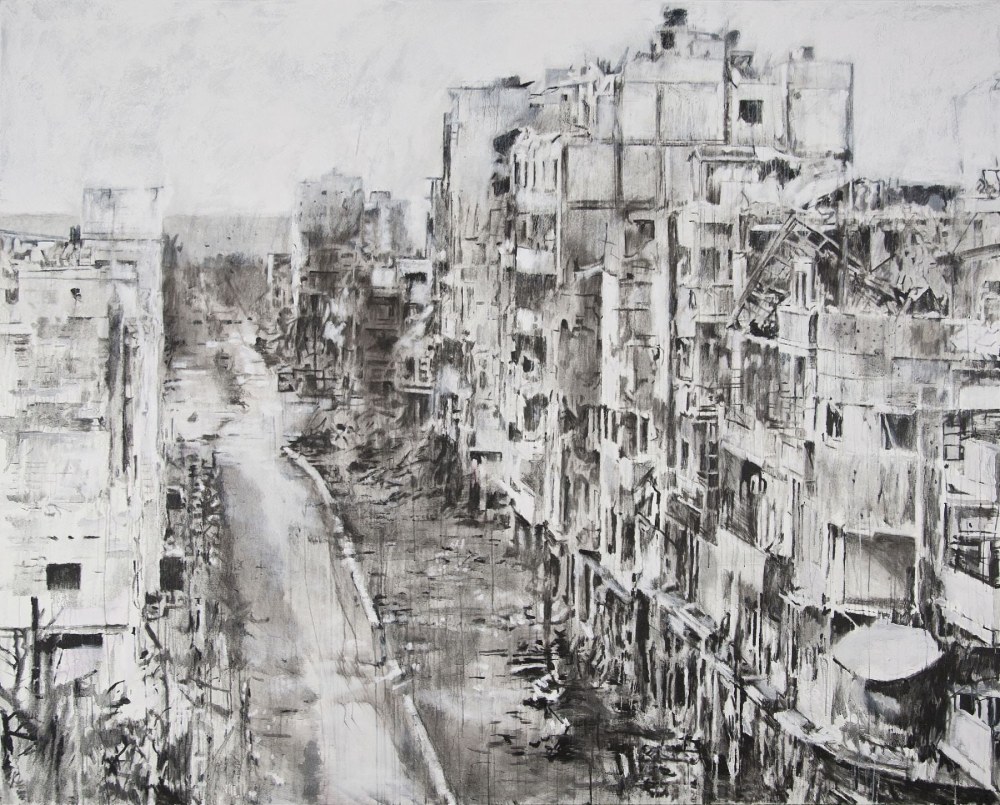
Tammam Azzam, Storeys Series, 2015
We had left Syria thinking we would be returning soon. We ended up staying in Dubai for five years. A form of nostalgia set in, and this gave birth to my 2013 digital photomontage series, Syrian Museum. In Dubai, without an atelier, I turned my computer into my studio. When Gustav Klimt’s The Kiss (Freedom Graffiti) from the Syrian Museum series took off the way it did, I felt there was a risk of being reduced to a label – a political artist, or a graphic artist, for example. Of course a work of art reflects its social and political backgrounds, but it does so in an artistic way. That is why I focus first and foremost on the artistic construction of the work. Subsequent classifications are another issue altogether, which I feel are very far from the basic essence of art. The media can really put an artist in a box and it’s a bit of a double-edged sword: We all hope to convey a part of the disaster in Syria, but as an artist, I don’t want to be defined by those works only.
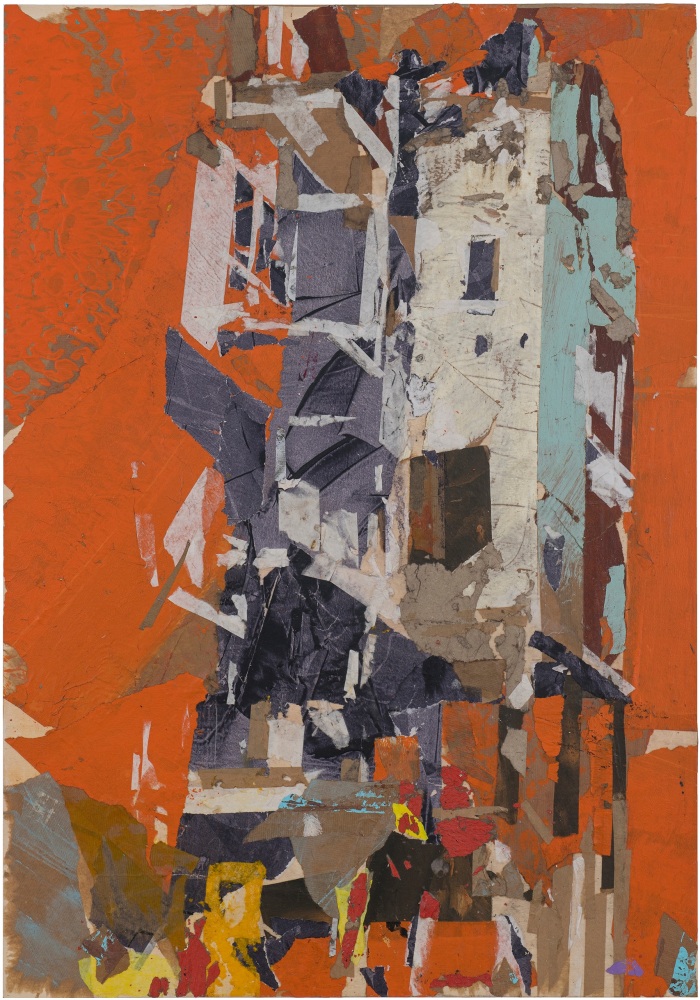
Tammam Azzam, Untitled, 2019
IMy experience in the city of Delmenhorst at the non-profit Hanse-Wissenschaftskolleg Institute for Advanced Study was transformative. Exploring the relationship between art and science, and meeting like-minded people, has been amazing. After Delmenhorst, we’ve moved to Berlin and, in a way, it reminds me of what it felt like moving to Damascus from the countryside, all those years ago. I have the feeling I’m going to like it here.
n these new works, the scenes of destruction you see in them aren’t necessarily about Syria, because destruction is universal. That being said, at the start of the Syrian conflict, every event caused a direct reaction in my work. Now years have started to pass, and the effect is reflected in other forms in artwork. I think art creates a window between two realities. One of them might seem an illusion or a figment of the imagination vis-à-vis ‘real’ life. However, destruction is not an illusion, either in reality or in a work of art. It is also not dreamt up out of the imagination: What we see, sadly, exceeds anything one could dream up.
So, back to that earlier question about labels: Who am I? A political artist, a graphic artist, a painter? Am I displaced? I like to pursue my art and live it as fully as I can. I like to see us more as a family who travels – and it’s a good thing to travel and to see the world, particularly for my daughter. What I’m trying to do now is to reclaim my headspace for work – a space for resistance.
As told to Anna Wallace-Thompson